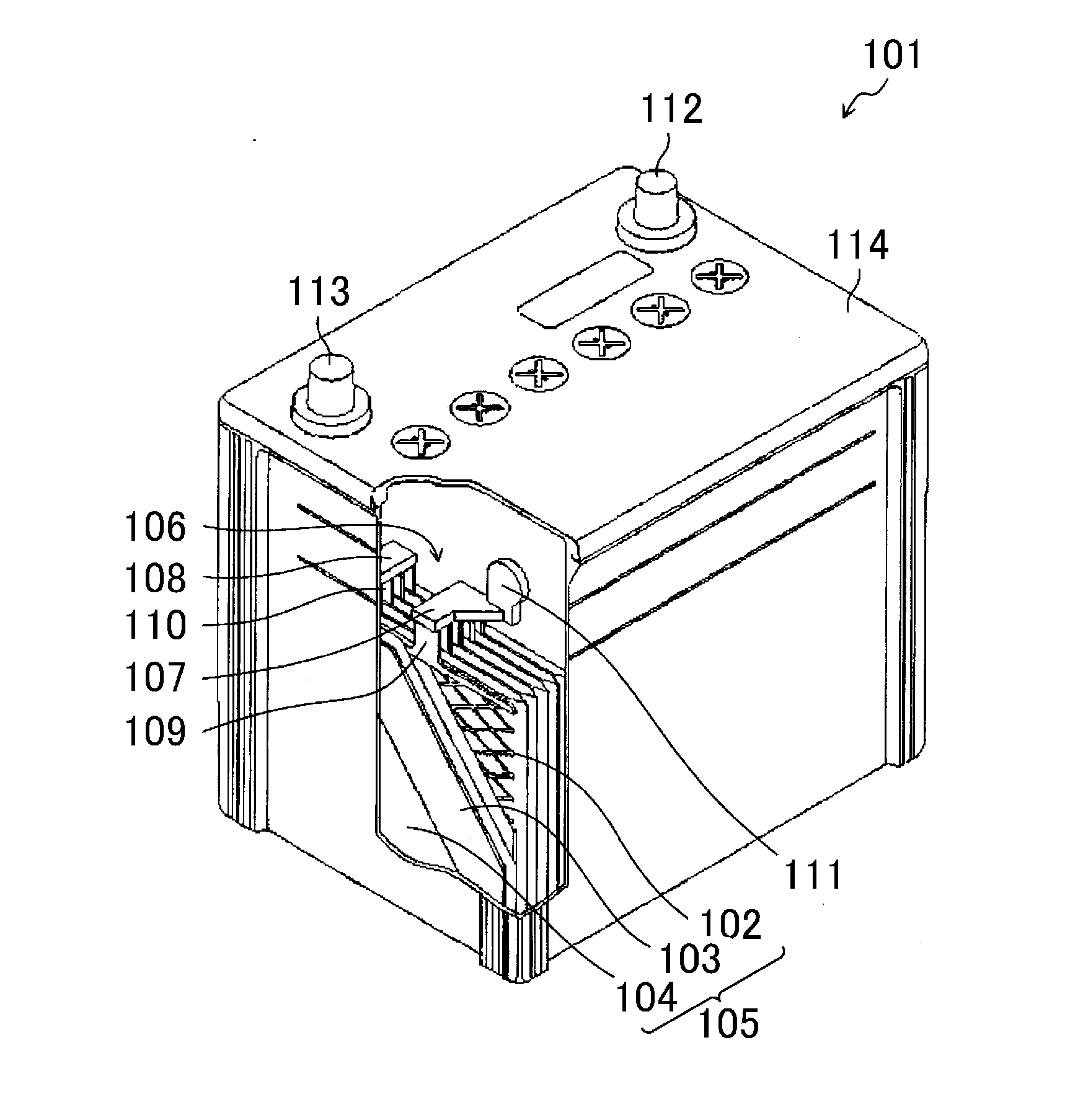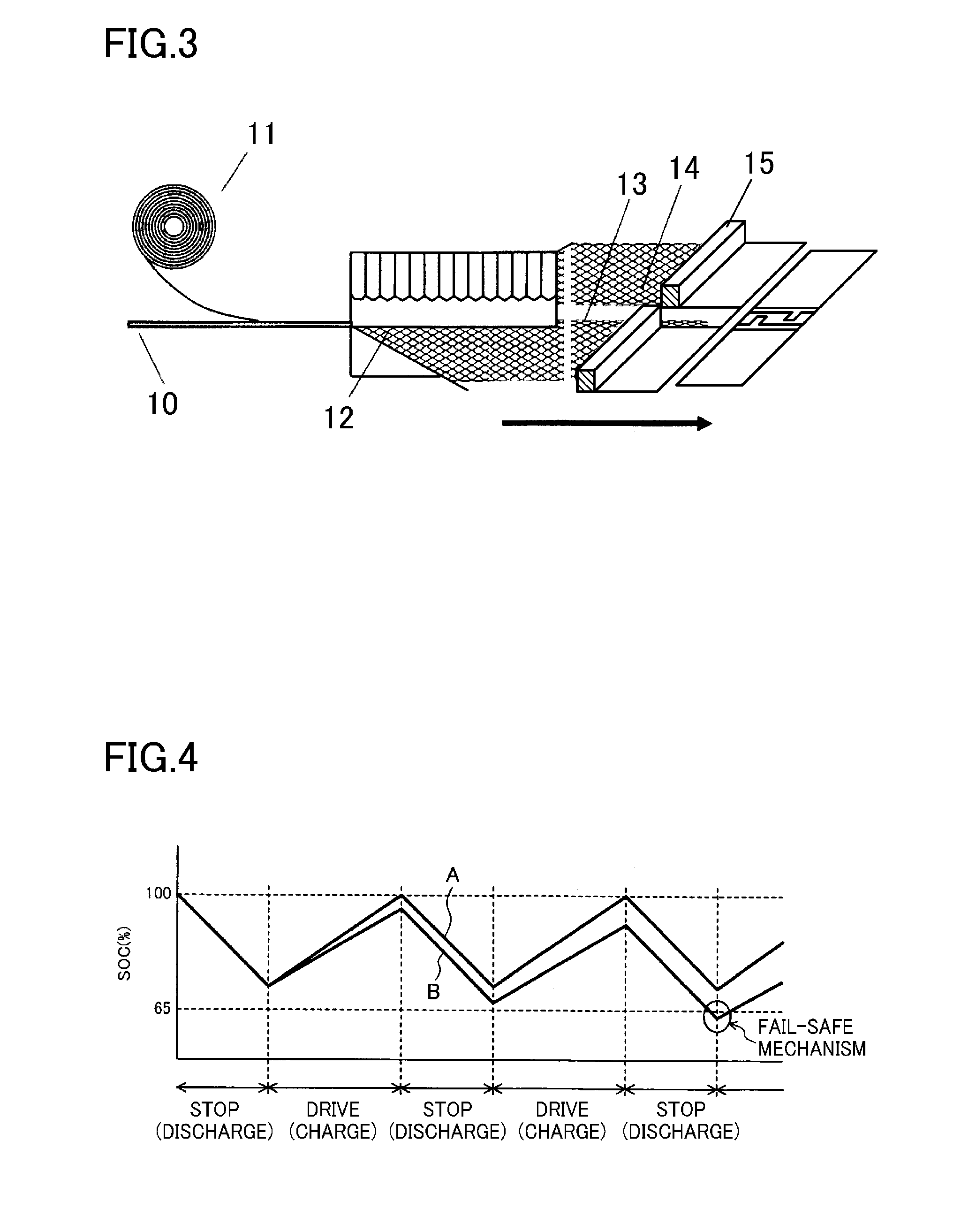Lead-acid storage battery grid and lead-acid storage battery
- Summary
- Abstract
- Description
- Claims
- Application Information
AI Technical Summary
Benefits of technology
Problems solved by technology
Method used
Image
Examples
first embodiment
[0042]FIG. 1 shows a lead-acid battery grid. The lead-acid battery grid is substantially quadrangular, and includes an upper frame 1 constituting an upper side frame of the grid, a lower frame 3 constituting a lower side frame of the grid, and a meshed part 2 present between the upper frame 1 and the lower frame 3 and includes intersecting strands 2a. The upper frame 1, the meshed part 2, and the lower frame 3 are made of a Pb alloy containing at least one of Sn or Ca.
[0043]The lead-acid battery grid of the first embodiment has two features. A first feature is that a ratio Wu / W of a mass Wu of an upper half of the meshed part 2 relative to a total mass W of the meshed part 2 is 62.5% or higher and 67% or lower. A second feature is that a cover layer 2b richer in Sn than the strands 2a is formed on at least part of a surface of the strands 2a, and the cover layer 2b is not formed on the lower frame 3.
[0044]Patent Document 1 describes that a lead-acid battery using a grid having the m...
example 1
[0110]A surface layer made of a lead alloy containing antimony was formed on a surface of a negative electrode grid, and a mass ratio of an upper half of a positive electrode grid to a lower half of the positive electrode grid was varied in a range of 1.5-2.2 to fabricate Batteries 1-7. The characteristic in the “short-distance drive” mode, the output characteristic in low SOC, and a yield of the positive electrode plate 102 were evaluated on each of the fabricated batteries. Negative electrode plates were arranged on both sides of an electrode group, and were contained in bag-shaped separators.
[0111]The negative electrode grid was an expanded grid including a negative electrode grid body made of an expanded grid of Pb-1.2Sn-0.1Ca, and the surface layer was made of Pb foil containing 3% by mass of Sb. The positive electrode grid was an expanded grid made of Pb-1.6Sn-0.1Ca, and did not include any surface layer. To an electrolytic solution, 0.11 mol / L of sodium sulfate (Na2SO4) was a...
example 2
[0119]To evaluate the recoverability from the overdischarge, the Na ion content in the electrolytic solution in Battery 4 fabricated in Example 1 was varied in the range of 0.01-0.45 mol / L to fabricate Batteries 10-13, and the characteristic in the “short-distance drive” mode, and the recoverability from the overdischarge were evaluated on each of the batteries. The negative electrode plates were arranged on both sides of the electrode group, and were contained in the bag-shaped separators.
[0120]The negative electrode grid was an expanded grid including a negative electrode grid body made of Pb-1.2Sn-0.1Ca, and a surface layer made of Pb foil containing 3% by mass of Sb. The positive electrode grid was an expanded grid made of Pb-1.6Sn-0.1Ca, and did not include any surface layer. The mass ratio of the upper half of the positive electrode grid to the lower half was 1.7.
TABLE 3“Short-DurationPositive electrode platedistanceindicatingPositive electrode gridride”Defectrecover-Mass rati...
PUM
 Login to View More
Login to View More Abstract
Description
Claims
Application Information
 Login to View More
Login to View More - R&D
- Intellectual Property
- Life Sciences
- Materials
- Tech Scout
- Unparalleled Data Quality
- Higher Quality Content
- 60% Fewer Hallucinations
Browse by: Latest US Patents, China's latest patents, Technical Efficacy Thesaurus, Application Domain, Technology Topic, Popular Technical Reports.
© 2025 PatSnap. All rights reserved.Legal|Privacy policy|Modern Slavery Act Transparency Statement|Sitemap|About US| Contact US: help@patsnap.com



